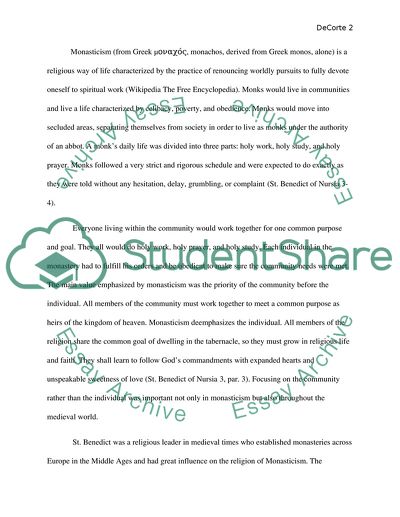Cite this document
(“How does the Rule of St. Benedict schedule reflect the medieval world Essay”, n.d.)
Retrieved from https://studentshare.org/religion-and-theology/1596317-how-does-the-rule-of-st-benedict-schedule-reflect-the-medieval-world
Retrieved from https://studentshare.org/religion-and-theology/1596317-how-does-the-rule-of-st-benedict-schedule-reflect-the-medieval-world
(How Does the Rule of St. Benedict Schedule Reflect the Medieval World Essay)
https://studentshare.org/religion-and-theology/1596317-how-does-the-rule-of-st-benedict-schedule-reflect-the-medieval-world.
https://studentshare.org/religion-and-theology/1596317-how-does-the-rule-of-st-benedict-schedule-reflect-the-medieval-world.
“How Does the Rule of St. Benedict Schedule Reflect the Medieval World Essay”, n.d. https://studentshare.org/religion-and-theology/1596317-how-does-the-rule-of-st-benedict-schedule-reflect-the-medieval-world.


